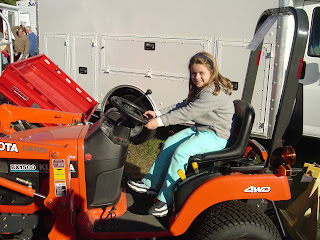As the leaves are beginning to crunch under our feet and pumpkins are making their way to doorsteps, the residences of the Loj are preparing for the most Fall of Fall festivities; Applefest. Applefest is an event and tradition hosted by the Loj every homecoming weekend. Pounds of Critz Farms apples are picked, grocery bags full of flour, sugar, oats, and cinnamon are purchased from Price Chopper, hundreds of Clinton Cider Mill donuts and cider are preordered, all with the intention of sharing the beauty and bounty that Autumn brings for Central New York with our community. The actual event will be Saturday from 9:30-12:30 am, free apple baked goods and all other plausible apple products will be available for the Colgate and Hamilton Community for the taking. Pies on pies on pies.
I found this article in a Maroon News issue from 2011 about Applefest. Apparently, back then, they had a DJ AND the Colgate Juggling Club entertain at the event!
When we went to go apple picking this past weekend, the trees were in pretty bad shape. In fact, this is the case along most of the East Coast as a result of some late frosts in April of 2016. When I was looking into articles to find out more of this spring’s weather affects, I came across an article from 1981 that reported on a very similar incident. At the end of the article, they write that the price per pound for McIntosh apples from 49 to 89 cents. (http://www.nytimes.com/1981/04/25/nyregion/new-york-s-apple-crop-hit-hard-by-3-late-frosts.html). Following, I read an article about this year’s spring frost effects, including the impact it had on the local apple orchard we visited to pick apples from for Apple fest, Critz Farms.
“In Cazenovia, meanwhile, Critz Farms is concentrating on its U pick and stand apples, but may need to buy apples elsewhere for its hard ciders. The orchard lost up to 60 percent of its crop. "I have absolutely no Empire (an apple variety,)," Matthew Critz said. "And not much Macouns, either." He said warm temperatures in March, followed by a sub-freezing plunge at the end of that month, were too much to overcome. Even the use of "smudge pots" to warm the trees couldn't help. "It was too cold -- no amount of smudge pots could help that," he said. (http://www.syracuse.com/living/index.ssf/2016/09/the_2016_upstate_ny_apple_crop_smaller_sweeter_and_in_some_cases_scarce.html)
Clearly, this is a problem that we will have to be addressing more frequently in the coming years, especially as weather patterns become more unpredictable as a result of global warming trends. Despite the 60% loss, we came home with over 200 lbs of apples from Critz Farms ready to be baked into some amazing dishes. There will be conventional apple pies and crisps, as well as some more creative recipes including apple grilled cheese sandwiches. There will also be gluten free options! Here are some pictures from previous years' Applefests.

























